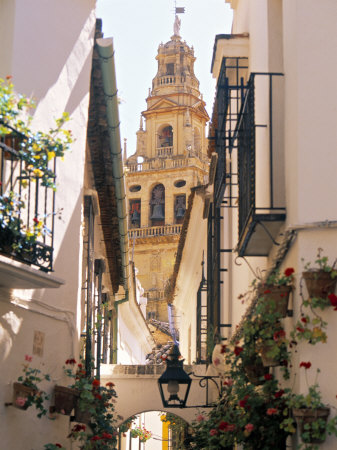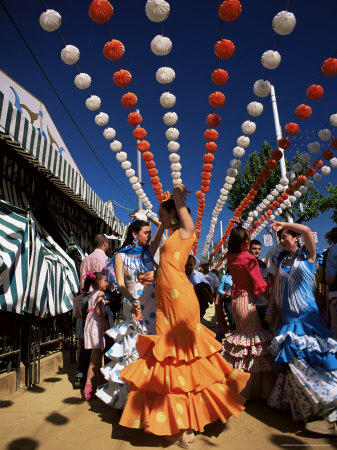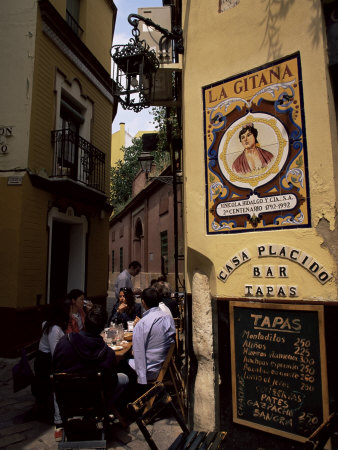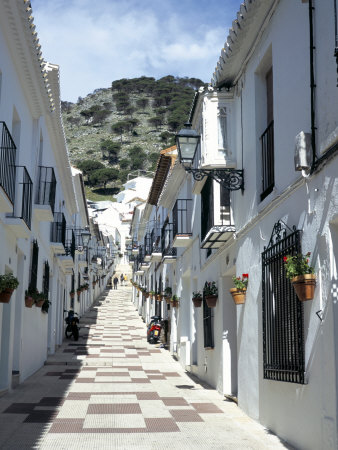Is Andalusia Your Destiny, this Summer?
Whether Andalusia is your destiny this summer, or not... you will find these historical points and other information about it useful. In fact, everything you invest time reading is useful, even if it was worse. At least, you learn new things from it.
Andalucia combines cultures, arts and folklores ranging from the earlier cut-of-art palaces, cathedrals and castles to the beautiful medieval Islamic architecture.
|
In addition to its rich history, Andalusia is rich by culture, arts, beautiful cities, golden beaches, vivid Andalusian nightlife and lots of Andalucian colors and fun.
Beautiful Andalusian cities and towns full of different kinds of restaurants, bars, boutiques, other touristy locations and vivid nightlife make Andalucia a cosmopolitan community in Spain nowadays.
It was rich by agriculture and mines during the early history, around 1000-900 BC. So, this richness has attracted the Phoenicians to it to trade in the coastal areas of Cadiz, Malaga and Huelva and other rich places. Thus the Tartessos civilization in western Andalusia became wealthy during the 8th-7th century BC.
The Phoenicians were from Canaan although the name is Greek and the late were existed prior to the Greek. (Discussion-able point. Bring it through the form). Their civilization was part of the Canaan's. They built many civilizations in several cities across the coastline of the Mediterranean Sea. Each civilization, apparently had its own name.
Tartessos or Tartessus was a city on the harbor at the south coast of the Iberian peninsula and it was a symbol of wealthy that serviced the economy of the surrounding society and its cultural life in Andalusia. So, the Canaan served the area in that era and built the Tartessos civilization with its defined culture.
When Andalusia fell under the Roman's influence during the 3rd century BC to the 5th century AD, the Roman made Cordoba the centre of their rule. Andalucia was at the top of the most wealthy and civilized parts of the Roman Empire. They began to import silver, copper, olive, and fish to Rome from it.
Apparently, the Roman area of influence was part of Andalusia and not the entire present day Andalusia. They named that part of their influence Hispania, with Cordoba as its capital, made it a province and added it to the other two provinces of Hispania Citerior and Hispania Ulterior.
|
It maybe that the end name of the two provinces read as interior and exterior, respectively. However, some sources translate Citerior as nearer and, well... you guessed what the other should mean, according to this interpretation.
Two of Andalusia's sons became Roman emperors. The first Roman emperor from Andalucia was Marcus Ulpius Traianus or in short Trajan, although he was not from a patrician family, as emperors known to come from. He was born on September 18, 53 in the province of Hispania Baetica (Italica) and died on August 9, 117. He continued as emperor from the year 98 to the year 117 AD.
The second Roman emperor was Publius Aelius Traianus Hadrianus or Hadrian in short. He was born on January 24, 76 in Hispania Baetica (Italica) and died on July 10, 138. He was a Roman emperor between the year 117-138.
During the rule of the Muslims after the invasion of Tariq ibn-Ziyad in 711, Cordoba, Seville and Granada became very prosperous as top Islamic cities in Spain. Cordoba became the most biggest city with its outstanding culture in Europe in the 10th century. So, the Islamic culture remained for long time in the Iberian peninsula.
|
More important than this is that Andalusia, or Al-Andalus as known widely in the Muslim world, flourished with its specific cultures, arts, beautiful gardens and Islamic architecure and thus all of this reflected through 780 years of prosperous life in its poetry and other pieces of arts and antiques.
This culture lasted longer in Andalusia until Granada, which was known as emirate, fell in January 2, 1492 under the power of king Fernando and his wife Isabel. Under his power, and while he established the segregation policy, thousands of people from different religions and among them Jews began to flee Andalucia to other places.
Useful Resources:
Lonely Planet knows Andalusia very well. It provides this tour guide with the most carefully hand-picked recommendations and inspirations to make your tours in Spain a pleasure.
Whether you are exploring the Islamic Palace, the cut-of-art gardens with ranges of olives and different kinds of followers, or enjoying the art of the Arabian architecture, walking through the white-washed villages, or hunting for delectable tapas, Andalucia regional guide
walks you through Spain's most exuberant regions.
Almost a thousand years ago, when most of Europe was just edging out of the Dark Ages, the south of Spain was a brilliant center of world culture, a site of splendor, and a magnet for the talented and ambitious from all around the Mediterranean, the Near East, and beyond.
In the days before Isabel and Ferdinand (and the Inquisition), the indigenous culture of Spain was enriched by the artistic, scholarly, technical and commercial contributions of Phoenicians, Romans, Arabs, Jews and Gypsies.
Even under the Catholic Monarchs, these diverse influences continued to add spice to a vibrant society evolving under the generous rays of the sun. Written with verve and personality, the Vibrant Andalucia: The Spice of Life in Southern Spain
is based in part on the author's personal research in Spain and France and her interviews with celebrated dancers, musicians and others.
|
Continue at the beautiful Andalusia and Zahara de la Sierra here.
Did you find this page about Andalusia is interesting? Please "like" and "tweet" it using the small buttons at the top of the right column. Thanks.
You can use the following form to comment on this page.
Have A Great Story About Some Beautiful Sites in the World?
Do you have a great story about any beautiful site in the world? Share it!
Comments or new articles about Andalusia appear on the second section of the page, when you or other visitors enter them in the form and submit it.
100 Beautiful Sites in the World| 100 Beautiful Sites Blog| 100 Beautiful Sights| About Us| Beautiful Site Map| Beautiful Scene Newsletter| Contact Beautiful Sites| Any Beautiful City| Forward 100 Beautiful Cities| User Interface| Beautiful Photo Exchange| Beautiful Picture Contest| Beautiful Sites Link Exchange| 350| Aarhus| Aegean Sea| Altai Mountains| Amazonian Beautiful Images| Amazon Rainforest| Amazon Rainforests| Amman| Andalusia| Archipelago Sea| Arctic Ocean| Battery| Bayan Olgii| Bay of Plenty| Beautiful Aarhus City| Beautiful Amazonian Photos| Beautiful Amazonian Pictures| Beautiful Amazonian Scenes| Beautiful Amazonian Tableaux| Beautiful Atolls of Tuvalu| Beautiful Caracas City| Beautiful Cities in Matanzas| Beautiful Greek Islands| Beautiful Haapai Islands| Beautiful Haapai Islets| Beautiful Hotels in Odense| Beautiful Hotels in Orebro| Beautiful Irkutsk City| Beautiful Matanzas City| Beautiful Matanzas Province| Beautiful Niuas Islands| Beautiful Orebro City| Beautiful Places in Tongatapu| Beautiful Santiago City| Beautiful Tonga Islands| Beautiful Tongatapu Islands| Beautiful Tuvalu Island| Beautiful Tuvalu Islands| Beautiful Tuiva State| Beautiful Varadero City| Beautiful Vavau Islands| Beijing| Bering Sea| Big Sur| Bookstores in Caracas| Boreal Forest| Borneo| Cape Floral Region| Caracas| Caracas Beautiful Places| Caracas Beautiful Sights| Caracas Tourists Attractions| Caribbean Sea Turtles| Chacaltaya| Chicago| Congo River Basin| Copenhagen| County Meath| Dalarna| Franz Josef Glacier| Ganges Delta| Gondar| Great Barrier Reef| Gujarat| Herschel Island| Hudson Bay| Ilulissat| Indus River| Kakadu| Kalahari Desert| Kauai| Kilimanjaro| Komodo Island| Kordofan| Lake Baikal|






